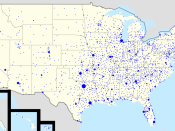Groups come together for many different reasons, whether it be personal, professional, or for the greater good of the community. The formation and development of these groups vary as greatly as the reasons for the groups themselves. This paper will analyze the five stages of group development identified by Tuckman and Jensen as it applies to Wal-Mart Tire and Lube Express. Team member roles and responsibilities as designated by this theory will be described. An explanation of how participation, leadership, and motivational skills should be demonstrated will be provided as well as a description of how the theory affects this author's perspective on group interaction in the workplace.
According to Heerye and Noon (2008), the five stages of group development identified by Tuckman and Jensen are; forming, storming, norming, performing, and adjourning. Not every group will go through these stages in the same manner. Some groups may take longer in one stage than another group or repeat stages before the adjourning stage.
"Boundaries between each stage are not as clear-cut as implied by the fine stage model" (Heerye and Noon, 2008). Forming is just as it sounds, the group gets together and the members begin to get to know each other. In the forming stage ground rules are established, goals are discussed and acceptable and expected behavior of the members are defined. In the storming stage, group control and leadership are defined. Without this stage, the group will experience difficulty as too who is in charge and can cause the members to disband or to follow their own agendas. Norming begins with the group members bonding with each other, developing relationships within the group. The emergence on shared responsibility begins in this stage. The performing stage is essentially the meat of the group, the reason the group came together in...



Group Interaction and Development
Defines teams very well
0 out of 0 people found this comment useful.